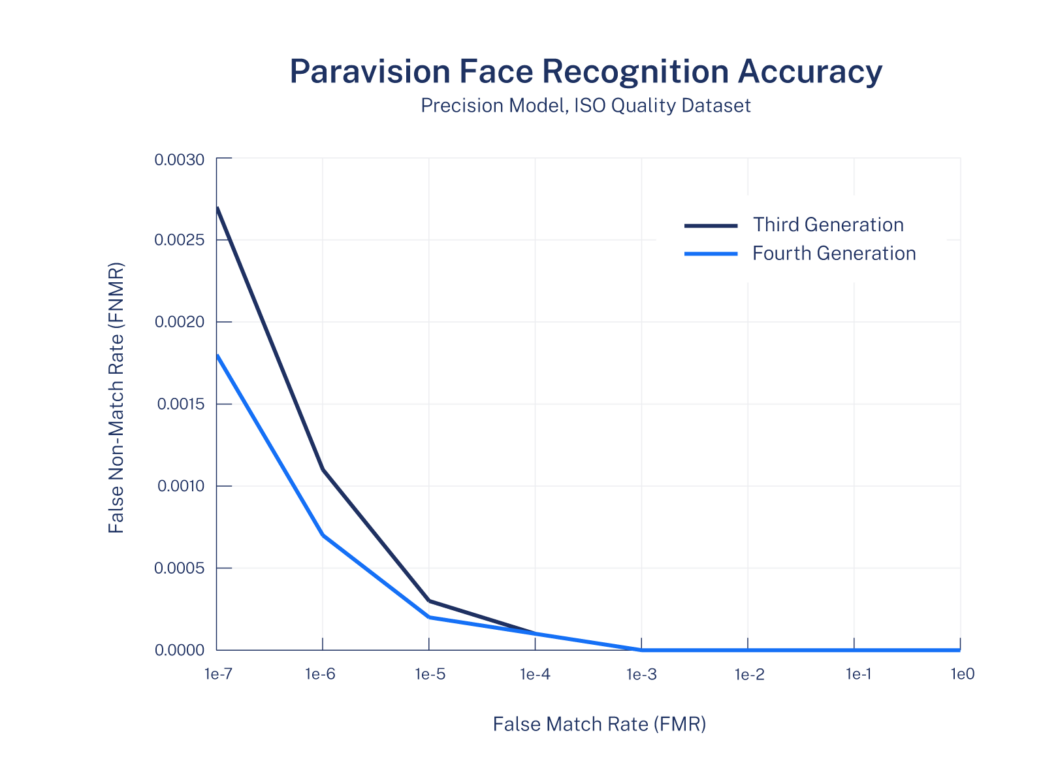Paravision extends leadership in face recognition accuracy with updated technology and dataset
Paravision, the U.S.-based leader in mission critical computer vision, announced today the availability of its fourth-generation face recognition toolset, demonstrating substantial improvements in accuracy across multiple use cases.
Our team, our technology, and our process all allow us to rapidly iterate and improve our products, delivering meaningful advances in face recognition performance on a consistent basis.
Charlie Rice, CTO, Paravision
Paravision has consistently been recognized as a top performer in NIST’s gold-standard Face Recognition Vendor Test (FRVT) reports. Paravision is currently the 3rd ranked company globally in 1:N Identification, 2nd ranked company globally in performance with face masks, and the top ranked company in the U.S., UK, and Europe across all major benchmarks. Even so, based on extensive internal benchmarking, the newly released fourth-generation toolset shows up to a 36 percent decrease in error rates as compared to Paravision’s most recent NIST submission.

This new release is also the first since Paravision’s closure of the Ever photo storage site. As explained in a recent announcement, Paravision is deleting all photos and videos from Ever and will not use any such data for face recognition training now or in the future. This includes the fourth-generation toolset announced today, which was not trained on any Ever data.
Computer vision is evolving at a dramatic pace, and we’re truly energized to harness the latest advances in AI and deep learning to help our partners solve some of the most challenging problems in identity, safety, and security. As a partner-focused, U.S.-based company delivering world-class accuracy, we feel we have a unique role to play in this regard.
Doug Aley, CEO, Paravision
As with prior releases, Paravision’s fourth-generation face recognition is available as both SDKs and cloud-ready matching services, optimized for leading compute platforms and operating systems from the server-side to the extreme network edge, with toolsets supporting major programming languages.

 More News
More News

